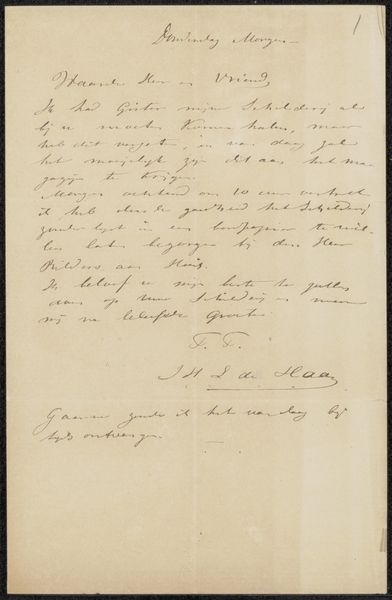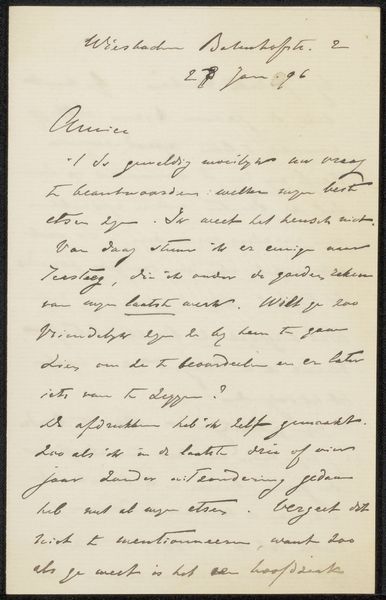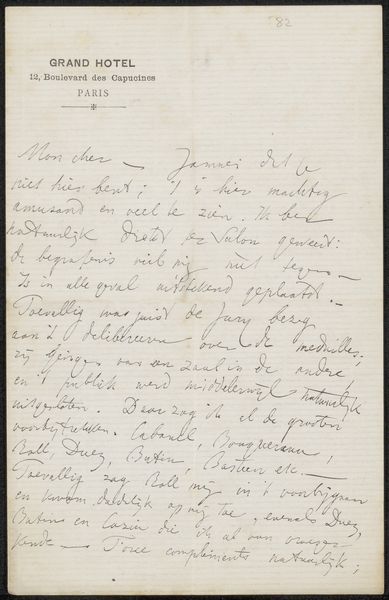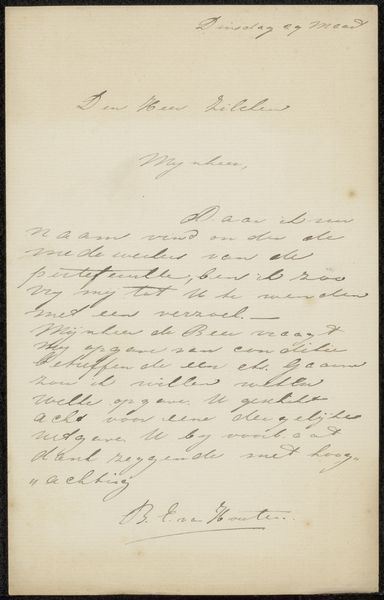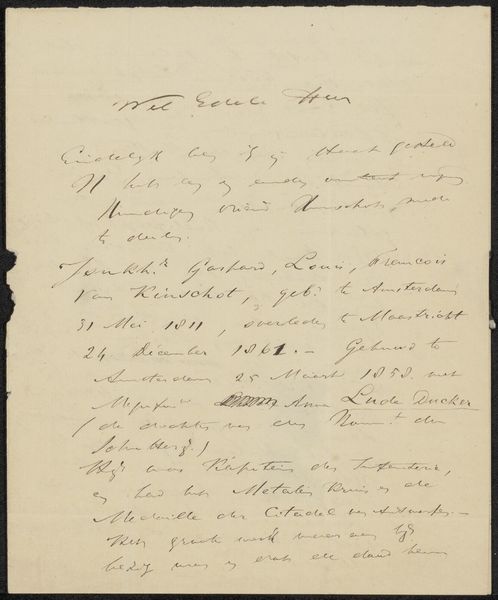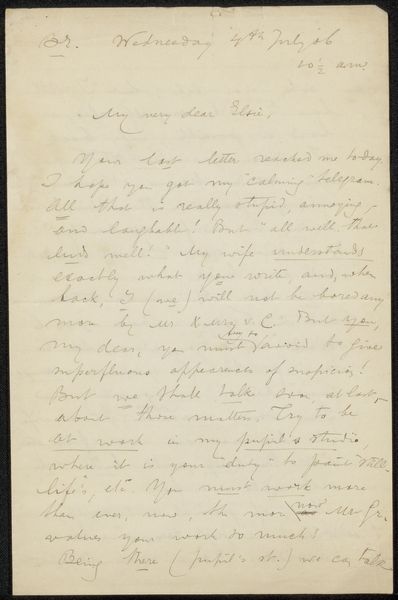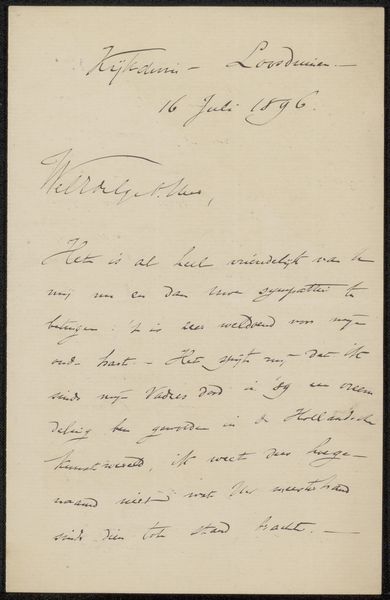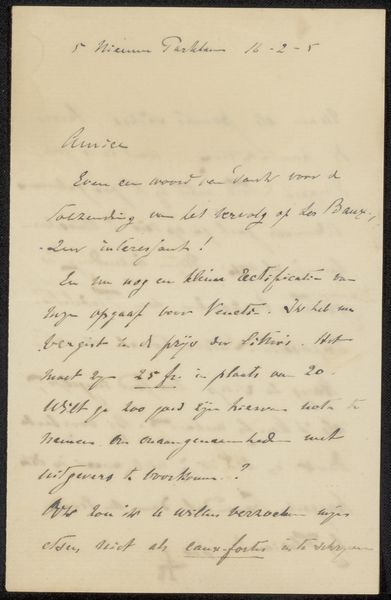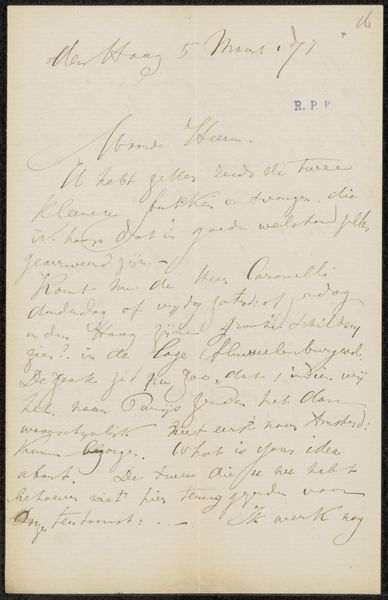
drawing, paper, ink, pen
#
drawing
#
aged paper
#
ink paper printed
#
hand drawn type
#
paper
#
personal sketchbook
#
ink
#
ink drawing experimentation
#
pen-ink sketch
#
ink colored
#
pen work
#
sketchbook drawing
#
pen
#
sketchbook art
Copyright: Rijks Museum: Open Domain
Editor: This is a letter from Johannes de Koo to Philip Zilcken, likely written between 1896 and 1899. It's pen and ink on paper. There's something intimate and immediate about seeing someone's actual handwriting, you know? It makes history feel less distant. What's your take on it? Curator: It does, doesn't it? And the spidery script really emphasizes that feeling, doesn't it? Imagine De Koo, perhaps a bit restless, jotting down these thoughts with a scratchy pen. It feels quite personal, more of an intimate glimpse than a formal pronouncement. It’s aged like an old map, you can feel its history, right? And how about the placement on the page; have you ever thought about how much the negative space matters, almost as much as the lines of the letter itself? It tells its own story of haste, or perhaps careful consideration. Editor: I hadn't considered the negative space quite that way. So, are you suggesting it adds to the story, that it provides another layer of context to his state of mind when he wrote this letter? Curator: Exactly! Think about it—each flourish, each carefully placed word or abbreviation… even the smudges could be saying something. It's almost as if we’re reading between the lines of De Koo's thoughts. It’s quite fascinating, isn’t it, how a seemingly simple piece of correspondence can whisper so many secrets? Do you get that feeling too? Editor: Absolutely! It transforms a simple letter into something almost like a self-portrait. Thanks, I'll definitely keep the negative space in mind from now on. Curator: My pleasure! It's those little things, those whispers from the past, that truly bring art to life, don't you think?
Comments
No comments
Be the first to comment and join the conversation on the ultimate creative platform.
